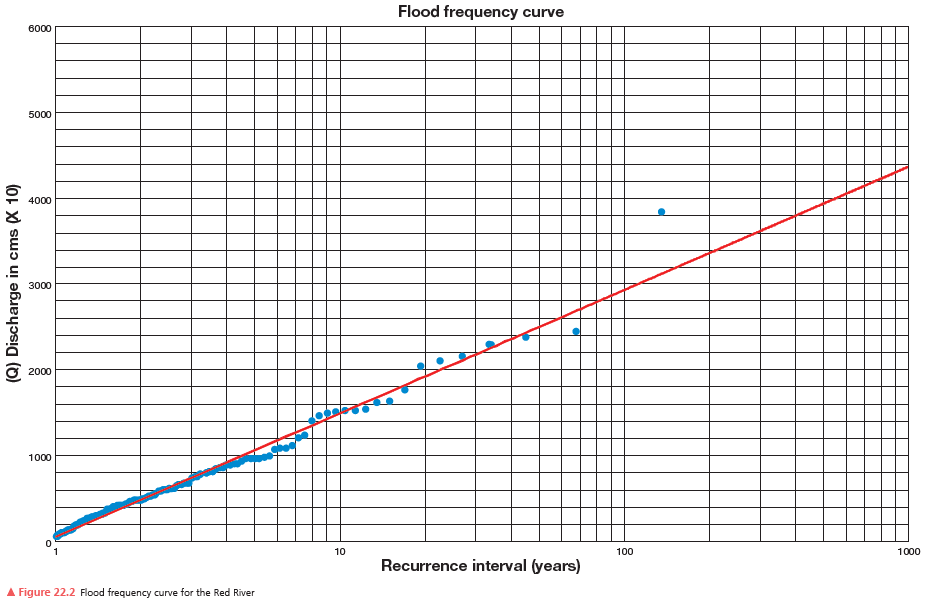Compare and contrast the three major types of plate tectonic boundaries. Discuss the tectonic features along each of
these boundaries. Provide specific examples of each type of boundary. What will be an ideal response?
The student should describe and discuss divergent, convergent, and transform plate
boundaries. Included in the discussion should be subduction zones, orogenic belts, mid-ocean
ridges, continental rift valleys, and transform faults. Examples may include the western coast
of South America (convergent), the Himalaya Mountains (convergent), the mid-Atlantic
ridge (divergent), the East African Rift (divergent), and the San Andreas Fault (transform).
You might also like to view...
Estimate the discharge of the

50-year flood: ______________
100-year flood: ______________
500-year flood: ______________
The Cairo population conference in 1994 and more recent Stockholm conference in 2014 linked
A) poverty, modern medicine, and water quality. B) development, modern medicine, and food production. C) sanitation, poverty, and agricultural development. D) poverty, population growth, and development.
What impact does increased distance from natural areas, as a consequence of urbanization, have on human views of nature? How do we ameliorate this?
What will be an ideal response?
An example of coevolution is
a. predators killing their prey. b. one species moving out of an area to find new resources. c. a host species becoming more vulnerable to parasitism. d. a pine tree evolving thicker pinecones to reduce consumption by squirrels after the squirrels evolved stronger jaws to eat the pinecones.